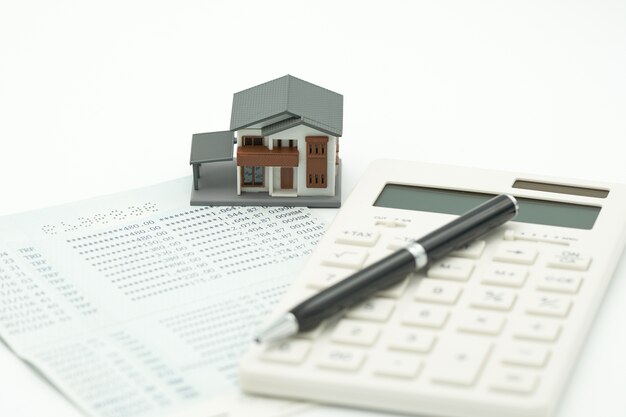Understanding Your HELOC Potential: A Comprehensive Guide to HELOC Calculators
Home Equity Lines of Credit (HELOCs) are valuable financial instruments that allow homeowners to borrow against the equity in their homes. Whether you're looking to renovate, consolidate debt, or make a significant purchase, understanding how much you can borrow is crucial. Enter the HELOC calculator, a tool designed to demystify the process. Let's delve into how you can use a HELOC calculator effectively, exploring all the intricacies of determining your borrowing potential.
What is a HELOC?
Before diving into calculators, it's essential to grasp what a HELOC entails. A HELOC is a revolving line of credit secured against the equity in your home. Unlike traditional loans or mortgages, it functions similarly to a credit card, where you have a credit limit that you can draw upon, pay off, and use again.
Key Characteristics of HELOCs
- Revolving Credit: Borrow, repay, and borrow again within the draw period.
- Variable Interest Rates: Rates can fluctuate based on market conditions.
- Flexible Usage: Funds can be used for various needs, from home improvements to other significant expenses.
The Role of a HELOC Calculator
A HELOC calculator is a digital tool that estimates how much credit you may qualify for based on several variables. It's a critical resource for potential borrowers to understand the scope of their borrowing capacity without affecting their credit score.
How Does a HELOC Calculator Work?
HELOC calculators consider factors such as:
- Home Value: The current market value of your home.
- Outstanding Mortgage Balance: The amount you still owe on your mortgage.
- Equity: Your home's value minus the mortgage balance.
- Loan-to-Value (LTV) Ratio: Lenders typically offer a percentage of the home's value, commonly capped at 80-90%.
- Credit Score: Your creditworthiness can influence borrowing limits.
Why Use a HELOC Calculator?
- Estimate Potential Borrowing: Quickly see how much you might be eligible to borrow.
- Financial Planning: Understand your financial position better and plan accordingly.
- Preparation: Equip yourself with knowledge before approaching lenders.
Factors Affecting Your HELOC Limit
Navigating HELOCs means understanding what affects the credit you can access. Several key factors can influence your borrowing potential:
Home Equity
The primary determinant is your home equity. The greater your equity, the higher your potential credit limit.
Loan-to-Value Ratio
Lenders often use the LTV ratio to mitigate risk. Your LTV determines how much of your home's value you can borrow. Lower LTV ratios typically qualify for better terms.
Credit Score
A healthier credit score can increase your borrowing capacity. It impacts not just the amount but also the interest rates you'll be offered.
Debt-to-Income Ratio (DTI)
A low DTI ratio signals to lenders that you manage debt well, making you a better credit risk. This could lead to access to higher credit amounts.
Steps to Using a HELOC Calculator
Ready to explore your HELOC options? Here’s a step-by-step guide on using a HELOC calculator efficiently:
Step 1: Gather Information
Collect all necessary data, including:
- Current home value
- Outstanding mortgage balance
- Credit score
- Annual income
- Any existing debt obligations
Step 2: Input Data
Enter the collected information into the HELOC calculator. Ensure accuracy to get the most reliable estimate.
Step 3: Analyze Results
Review the calculator's output to understand your potential credit limit. Pay attention to how changes in variables affect the result.
Step 4: Scenario Planning
Experiment with different inputs—what happens if your home's value changes or if your debt reduces? This planning helps in various future financial scenarios.
Calculating Your Financial Path Forward: Practical Examples
Let's walk through a simplified example to demonstrate how to calculate your potential HELOC limit:
Scenario Example
- Home Value: $500,000
- Outstanding Mortgage: $200,000
- Desired LTV: 80%
Calculation
- Calculate Maximum Loan Limit:
- Maximum loan based on LTV = Home Value × LTV = $500,000 × 0.80 = $400,000.
- Calculate Potential HELOC Limit:
- Subtract the outstanding mortgage from the maximum loan limit = $400,000 - $200,000 = $200,000.
- HELOC Limit:
- You may qualify for a HELOC limit of $200,000, assuming no other influencing factors.
Tips for Better HELOC Calculations
Here are some actionable tips to improve your calculation and preparation:
- Regularly Update Your Home Value: Keep abreast of market changes to adjust estimates accurately.
- Enhance Credit Profile: Pay down high-interest debts to improve your credit score, enhancing HELOC terms.
- Stay Informed on Interest Rates: Understand how prevailing rates affect your HELOC, especially if they're variable.
Quick Tips Summary 🌟
- 🔍 Monitor Home Equity: Regular valuation helps keep calculations current.
- 📈 Boost Credit Score: Strong credit can open better borrowing conditions.
- 📊 Explore Multiple Scenarios: Use different assumptions to plan for various situations.
- 🔄 Review Debt Obligations: Ensure a healthy DTI ratio by managing your debts efficiently.
Navigating HELOC Decisions with Confidence
The financial implications of taking out a HELOC necessitate informed decision-making. With the right tools and understanding, you can enhance your financial strategy effectively. Research thoroughly and use a HELOC calculator to paint a more precise picture of your borrowing potential—empowering you to make informed financial commitments aligned with your goals.
This guide introduces you to calculating and understanding your HELOC potential, offering a pathway to better financial literacy and preparedness. Stay engaged and proactive in your financial planning, leveraging the right resources to navigate your fiscal journey with confidence.

Related Topics
- Are Heloc Loans Good
- Are Heloc Rates Fixed
- Are Heloc Rates Going Down
- Are Helocs a Good Idea
- Are Helocs Tax Deductible
- Are Student Loans Considered As Debt When Getting a Heloc
- Are Student Loans Considered As Debts When Getting a Heloc
- Are Student Loans Considered When Getting a Heloc
- Are Student Loans Considered When Getting a Heloc In Illino
- Are Student Loans Considered When Getting a Heloc In Illinois